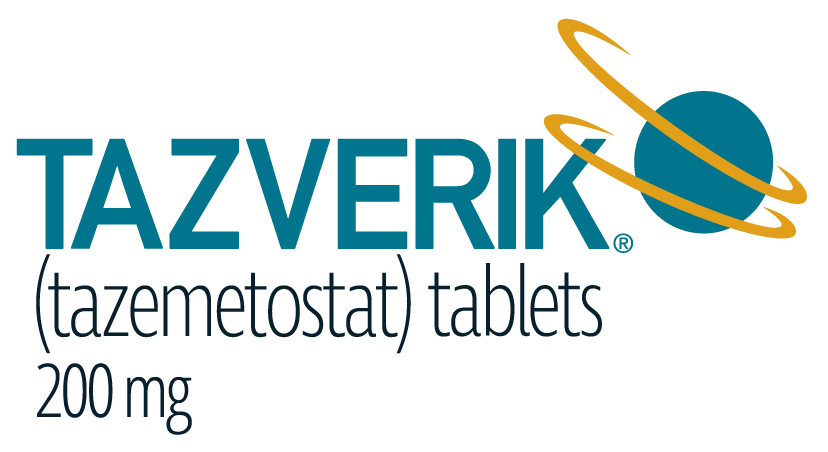Recommended dose reductions of TAZVERIK for adverse reactions1
DOSE REDUCTION |
DOSAGE |
|---|---|
|
First |
600 mg orally twice daily |
|
Second |
400 mg orally twice daily* |
*Permanently discontinue TAZVERIK in patients who are unable to tolerate 400 mg orally twice daily.1
Recommended dosage modifications of TAZVERIK for adverse reactions1
ADVERSE REACTION |
SEVERITY |
DOSAGE MODIFICATION |
|---|---|---|
|
Neutropenia |
Neutrophil count |
|
|
Thrombocytopenia |
Platelet count less |
|
|
Anemia |
Hemoglobin less |
|
|
Other adverse reactions |
Grade 3 |
|
|
Grade 4 |
|
ADVERSE REACTION & SEVERITY |
DOSAGE MODIFICATION |
|---|---|
|
Neutropenia Neutrophil count less than 1 x 109/L |
|
|
Thrombocytopenia Platelet count less |
|
|
Anemia Hemoglobin less than 8 g/dL |
|
|
Other adverse reactions Grade 3 |
|
|
Other adverse reactions Grade 4 |
|
Review the Select Lab Abnormalities table when considering dose modifications for adverse reactions.
Recommended dose reductions of TAZVERIK for strong or moderate CYP3A inhibitors, where coadministration cannot be avoided1
CURRENT DOSAGE |
ADJUSTED DOSAGE |
|---|---|
|
800 mg orally twice daily |
400 mg orally twice daily |
|
600 mg orally twice daily |
400 mg for first dose and |
|
400 mg orally twice daily |
200 mg orally twice daily |
NO DOSE ADJUSTMENTS ARE RECOMMENDED FOR PATIENTS WITH: |
|---|
|
|
NO DOSE ADJUSTMENTS ARE RECOMMENDED FOR PATIENTS WITH: |
|---|
|
|
†Mild=total bilirubin >1 to 1.5 times ULN or AST >ULN; moderate=total bilirubin >1.5 to 3 times ULN; severe=total bilirubin >3 times ULN.1
CYP3A=Cytochrome P450 (CYP)3A; ULN=upper limit of normal; AST=aspartate aminotransferase.
CYP3A=Cytochrome P450 (CYP)3A; ULN=upper limit of normal; AST=aspartate aminotransferase.
Reference: 1. TAZVERIK (tazemetostat) Prescribing Information. Cambridge, MA: Epizyme, Inc., August 2024.
